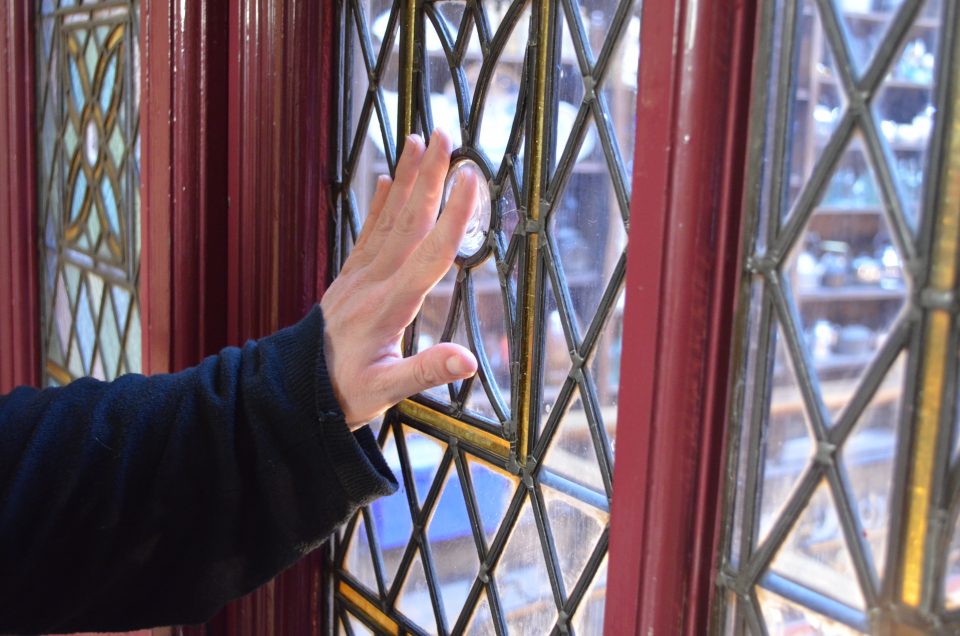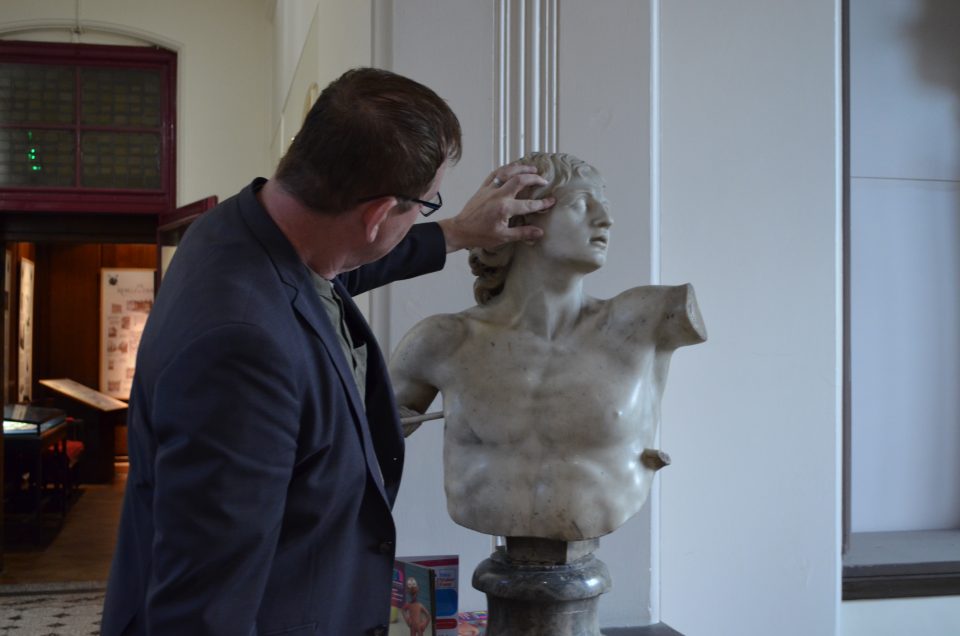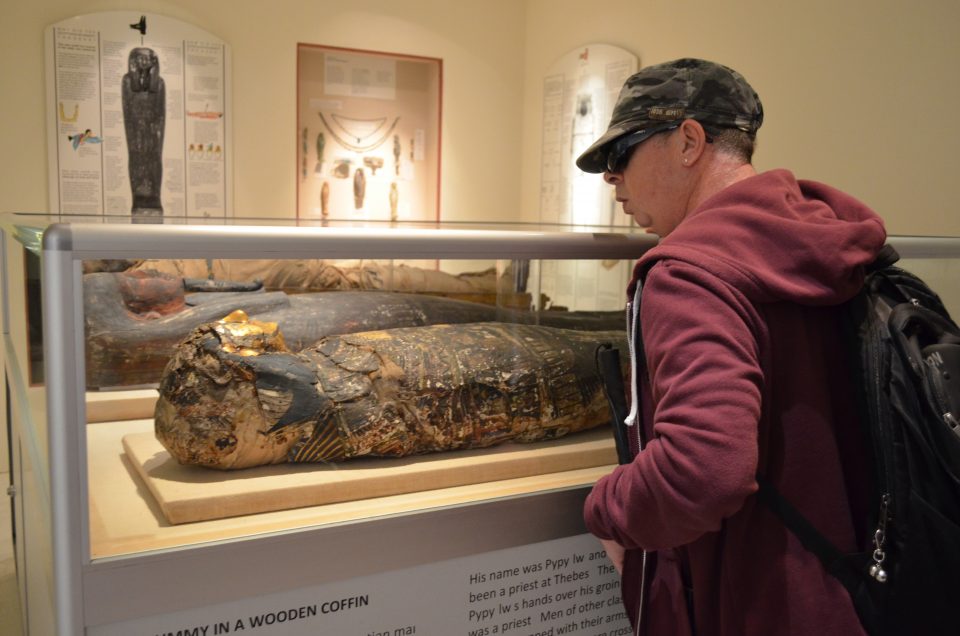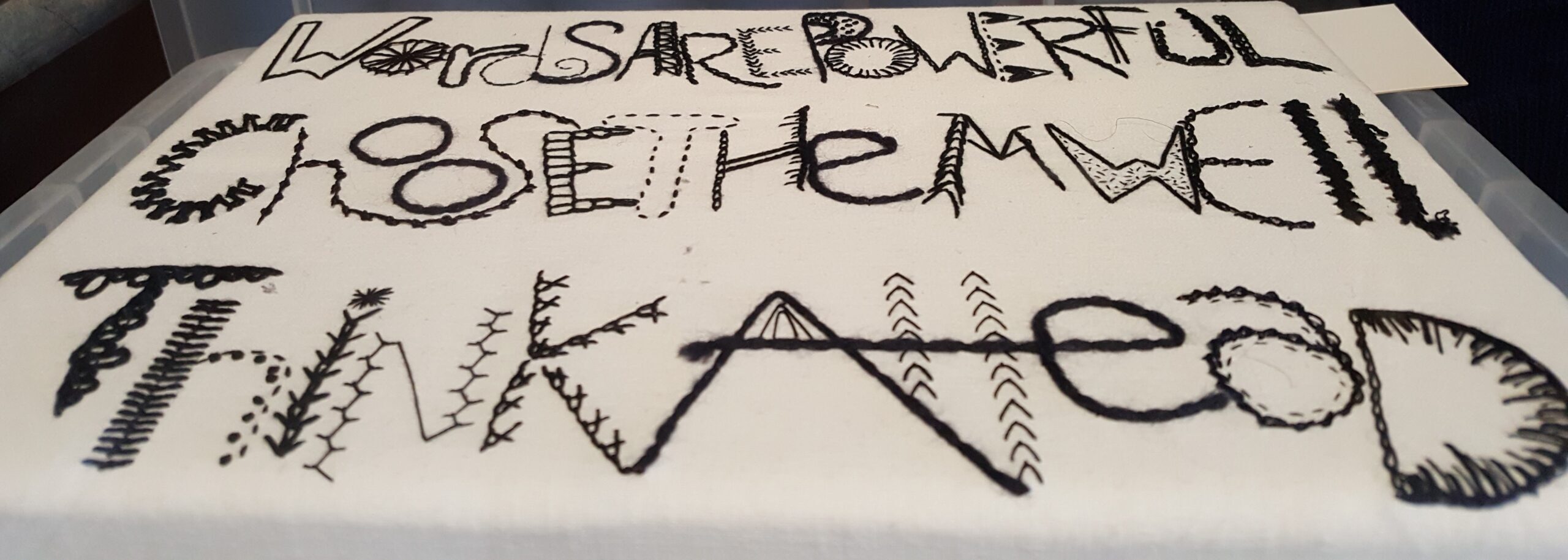This afternoon I had the pleasure of assisting with a session to learn more about the audience experience at the Derby Museum and Art Gallery for visitors who are partially sighted. Having very different sense perceptions myself, because of having Sensory Processing Disorder (SPD) I am always curious about how others with different sense abilities to the usual, and my own, perceive the world. I was also curious to see how a ‘tactile tour’ compiled by a fully-sighted and neurotypical (NT) programmer would compare to the reality of a partially sighted experience.
Although the tour was created around sensory elements of the collection at Derby Museum and Art Gallery, the experience of the environment itself was much more insightful. Walking around with the group opened up a world of possibilities about how hazardous a space could possibly be, with changes in floor material as well as low level obstacles such as rope barriers at knee height all creating issues.

What became apparent quickly was just how much more there was to think about than just what parts of the collection could be used to best effect. Also, the lack of understanding about the environmental factors that could be considered tactile surprised me. I have found that NTs tend to be very sight-focused, to the exclusion of the other senses. There are a myriad of different textures and sensations about the museum building. From the cool leather Chesterfield seats in the Joseph Wright Gallery, to the original lead glass panels in the doors opposite the Egyptian mummies. The different sizes and textures in the rooms changed the sounds, temperature and air sensations on the skin. Varying materials underfoot contrast as you travel around the space; hard and creaking wooden floor-boards with quiet and soft cork tiles.

Improvements in the visitor experience were explored. How to make displays behind glass more accessible for example. In the Notice Nature gallery small LED torches were available to see the detail in the displays of insects, These dramatically increased the contrast and detail recognition available to our group of visitors. Lighting generally was found to be a quick fix, with the preference of the group being to raise lighting levels across the board. I thought how this would come into conflict with my own sensory needs, and the difficulties exposure to bright lights can cause me.

The greater subject of balancing the accessibility needs of different groups into a visitor experience was raised. The Silk Mill building, which is about to undergo a full renovation into a Museum of Making, will be an amazing test case for this cause. Given that the building and thus the visitor environment, is being built from the ground up, the opportunity to integrate the needs of different groups could potentially be done. Designing the lighting system to have variable capabilities across both the ambient and display lighting would be am amazing place to start. This capability would need to be built into the final programming of the space; perhaps with particular visiting times for different groups, as Manchester Museum currently offers, so that accessibility is as universal as possible.
As well as learning loads about the visitor experience from a different point of view it was a chance to see how a museum relates to different audience groups and explores improvements. We spent a good five minutes in the disabled toilet discussing (certain aspects) of the user experience and where the pinch points might be – getting some rather strange looks when all seven trooped out one after the other!

We finished the tour with a handling session, exploring objects from different aspects of the collection. Medieval tiles and obsidian arrow heads were passed about and discussed. The three dimensional aspects of objects such as these could so easily be included within the permanent exhibition space, making use of the 3D scanner and printer, as I had seen at the Arch’ and Anth’ Museum at Cambridge University. Any surface which has texture and relief could be reproduced, with the added advantage of allowing children to explore with their hands, as well as including another sense in the experience.
I really enjoyed meeting the group of volunteers who shared their time and experience and I’m looking forward to the next part of the project.




